WSWS Process Doc
Walking Simulators
An emerging genre of video games, a heavily narrative driven
experience with minimal player agency [You can look and walk
around.] in a video game space. Many people have a problem
with calling them video games instead, opting to make fun of
them by referring to them as “walking simulators” or “screenshot
generators” if the games are graphically pleasing enough.
Despite the negativity of the name it was co-opted and it stuck
as the genre title.
Why
It started with The Beginner’s Guide. It wasn’t my first walking
sim I’ve played but this one struck a chord with me. When I went
online I found that a lot of other people felt the same way. Critical
perception was positive, however the whole perception of the
game was polarized. It was either hated or loved. The critical
reaction simply comes from how new video games are as a
medium—how the language for them is underdeveloped. In
essence, nearly any interactive experience could be considered
a video game. Pong is just as much a video game as World of
Warcraft is, and yet any person can tell you they are entirely different
things. Despite not having the right language, what makes
these “walking simulators” so successful?
Personally, they’re incredibly engaging, an overarching narrative,
spoken or written or found in the environment, while you simply
explore. Despite being in one “genre”, each is as varied as the
last. Part of the consensus seems to be simply that because
they’re so different from current “standard” games, praise is
given for straying from these typical conventions. Though there
has to be more, and it’s easy to know you like something, it’s
something else entirely to break it down and put it into words
and research.
Audience
There’s a tricky nuance to a target audience that plays games,
especially to those that play smaller indie titles. The audience
will range from 18–35, as a general range, though this by itself is
far too hopeful, even if over half of the people in this age group
play games they’re not likely to play what’s been described. The
problem with the gaming community is that despite a long held
standard of “the average gamer” there is in fact no such thing.
The average person is more inclined to own only a few games
and still likely to only play as much as half of those. Though it’s
not necessarily correct the phrase “Core Gamer” will be used
to describe the audience. Core Gamers are what people would
consider as “the average gamer”. These are the people who play lots of games, they have at least 100 games in their library and
these are the people you want. They make up roughly 1% of
the game playing population. Despite being a small percentage,
1% makes up well over a million people.
Research
Research has revealed an interesting take on player agency in
games, a reason it’s included as part of the overall project presently.
Different games will have entirely different relationships
with their audiences depending on the amount of player agency
or co-authorship the player feels they have.
While other articles have found that the strongest part of any
walking simulator is its ability to lie to the audience. Despite
insisting we love things to be clear and straightforward we still
love an unreliable narrator. A twist in perceptions, in ideas; it’s
mysterious, it’s human. “I had to try again the next day, and got
an opening bit of narration that was entirely different to what it
had been the day before. I was confused, and also incredibly
intrigued, like waking up with a hangover inside your flat but
finding your keys on the doorstep. The mystery compels us to
solve it.”
Some have pointed toward the worlds built for these games,
our innate curiosity to reach out and discover, “what happened
here?” [In other words, environmental storytelling.]
Another points toward the unique relationship of player to
game. How a person doesn’t [can’t] put themselves entirely
into a game [it simply won’t happen, though they can certainly
be immersive there will always be a degree of separation.]
Neither will they entirely separate themselves from the game,
only treating it as an object. They adopt a unique relationship
with the game instead. “...a player-subject that is created by the
game as a ‘skin-subject,’ adopting the avatar of the game as a
skin in order to perceive the game, in which this player-subject
acts according to the power structure of the game’s rules.
This player-subject has an ambiguously defined relation to the
player outside of the game, of which it is either a subset among
multiple subjectivities, or the temporary subset of one greater
moral being.”
Proposal Outline
There’s an emerging genre of video games, if you can call them
video games, a heavily narrative driven experience in a video
game space. Many people have a problem with calling them
video games instead, opting to make fun of them by referring to
them as “walking simulators” or “screenshot generators” if the
games are graphically pleasing enough. Despite a lambasting
reaction from many who play games, these same games are
lauded by critics, reviewers, and many others.
The critical reaction simply comes from how new video
games are as a medium—how the language for them is underdeveloped.
In essence, nearly any interactive experience
could be considered a video game. Pong is just as much a video
game as World of Warcraft is, and yet any person can tell you
they are entirely different things. Despite not having the right
language, what makes these “walking simulators” so successful?
Personally, they’re incredibly engaging, an emotional or comedic
overarching narrative, spoken or written, while you simply
explore the environment. Just like video games, despite
being in one “genre”, each is as varied as the last. Some tell
incredibly dramatic stories, fragmented stories, some are
comedic, others sad and hopeful, and some are just people
trying to understand themselves. Part of the consensus seems
to be simply that because they’re so different from current
“standard” games, praise is given for straying from these typical
conventions. Though there has to be more, and it ’s easy to
know you like something, it’s something else entirely to
break it down and put it into words and research.
The largest and most pivotal part of this project is the research,
everything needs to be researched as much as possible, without it the final product will hardly be achievable. Gathering qualitative
data, as quantitative won’t be nearly as effective in the
scope of this project. Exploring narrative archetypes will fit
into this, figuring what is and isn’t successful in these regards.
After sufficient data has been collected it will be inserted into
an “explorable” 3D environment. Taking advantage of the same
techniques researched to explore and extrapolate this data into
its own entity of similar form and makeup. How this is done precisely
is largely up to the data collected.
Simply: what makes a walking simulator so successful? Breaking down several of their key components and finer minutiae. To understand what makes them so successful [or not]. Then create a standalone game, likely centered around featuring this data while using what’s been learned and building a story off all of it.
Simply: what makes a walking simulator so successful? Breaking down several of their key components and finer minutiae. To understand what makes them so successful [or not]. Then create a standalone game, likely centered around featuring this data while using what’s been learned and building a story off all of it.
STEEP
Social, technological, economic, ecological, and political factors that constitute the external environment that affects decision making.
In the larger world, the realm of digital games have only grown more and more prevalent with the advent of new markets [e.g. Steam, App Store, Play Store]. With these growing markets more and more people are found to be playing games, about half of everyone is playing something. Games used to be niche and narrow, now they’ve come into the mainstream, the zeitgeist and they’re here to stay.
With the increased accessibility of playing games there’s been a parallel increase in the availability of game making tools. Free or inexpensive options to create games and game assets has led to a boom in independent game development.
With that has come a variety of new and inspired games and most importantly an emerging market for these games, including walking simulators.
Inspiration
My biggest sources of inspiration were mainly three games:
-
The Beginner’s Guide
-
The Stanley Parable
-
Dr. Langeskov, The Tiger, and The Terribly Cursed Emerald: A
Whirlwind Heist
Two developers, William Pugh and Davey Wreden, made The
Stanley Parable together before splitting and creating Dr. Langeskov
and The Beginner’s Guide, respectively.

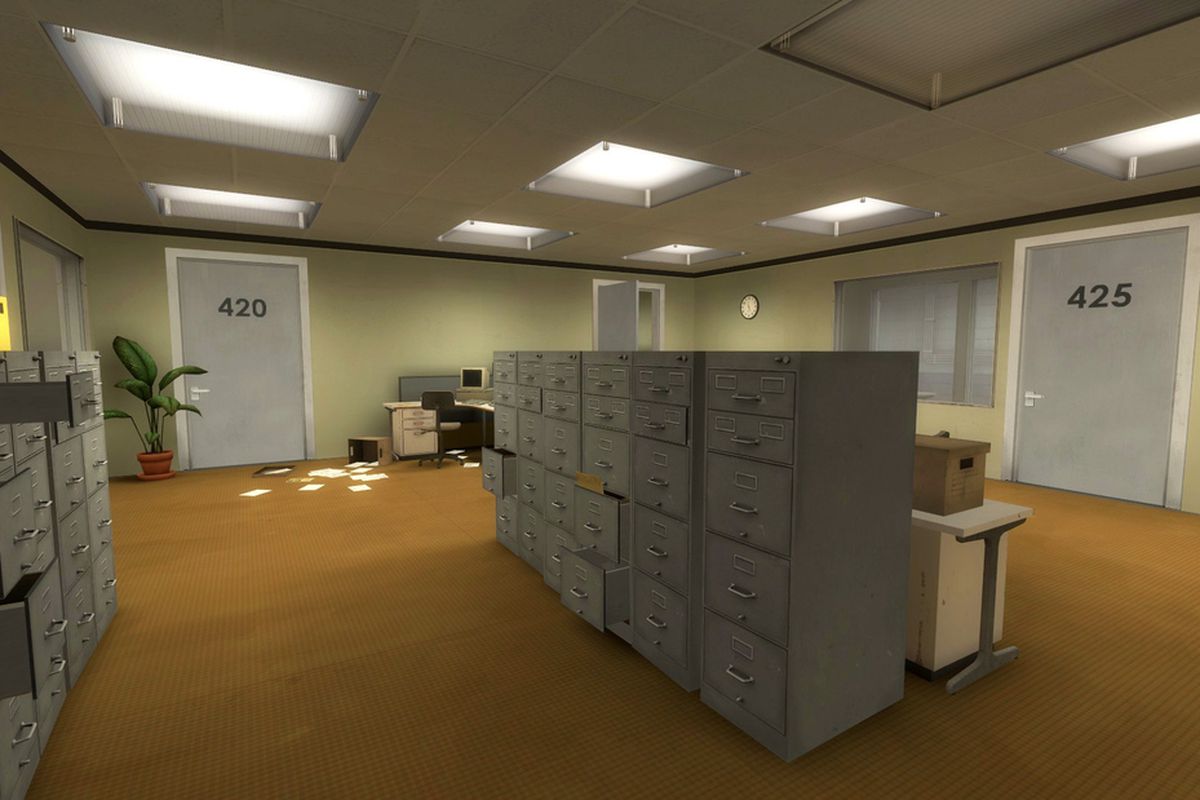

Practice
This hadn’t been the first time I’d used Unity but even if it’s not the first, Unity finds a way to make things difficult. With that and the limited time span in mind I practiced creating and working in Unity.
![]()
![]()
![]() Branding
Branding



Branding is something important to me, it’s a level of presentation and craft that’s been heavily emphasized for me and I needed to extend that thinking to this project. I initially landed on PigoPago as the typeface but didn’t feel it captured the game. After consideration, I chose to modify League Spartan into a wordmark for Walk Sim Walk Sim, along with creating a small walking person icon to accompany.


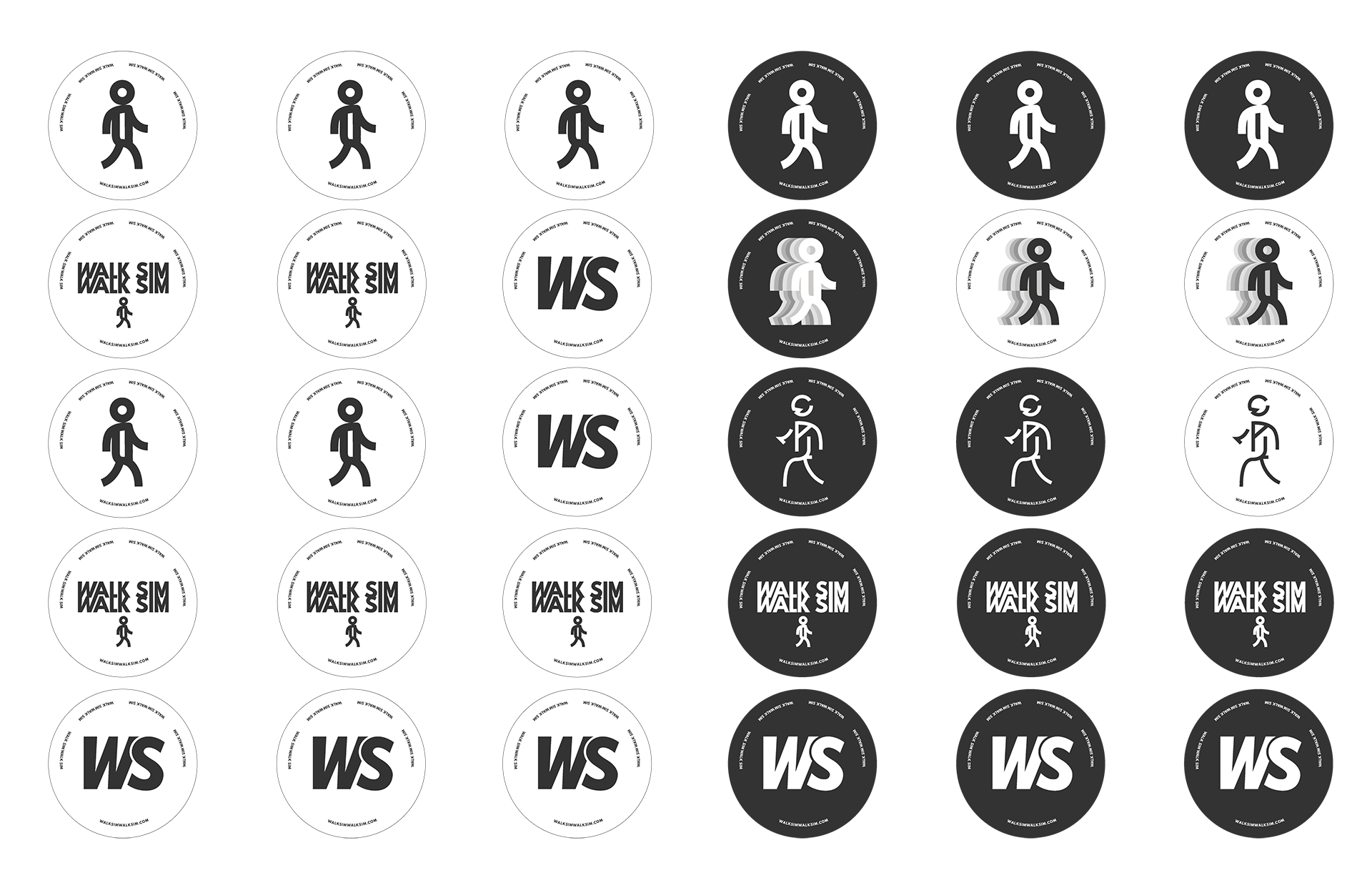
Early Game Progress
I began with the museum space, a simple, and cursory explanation of walking simulators.
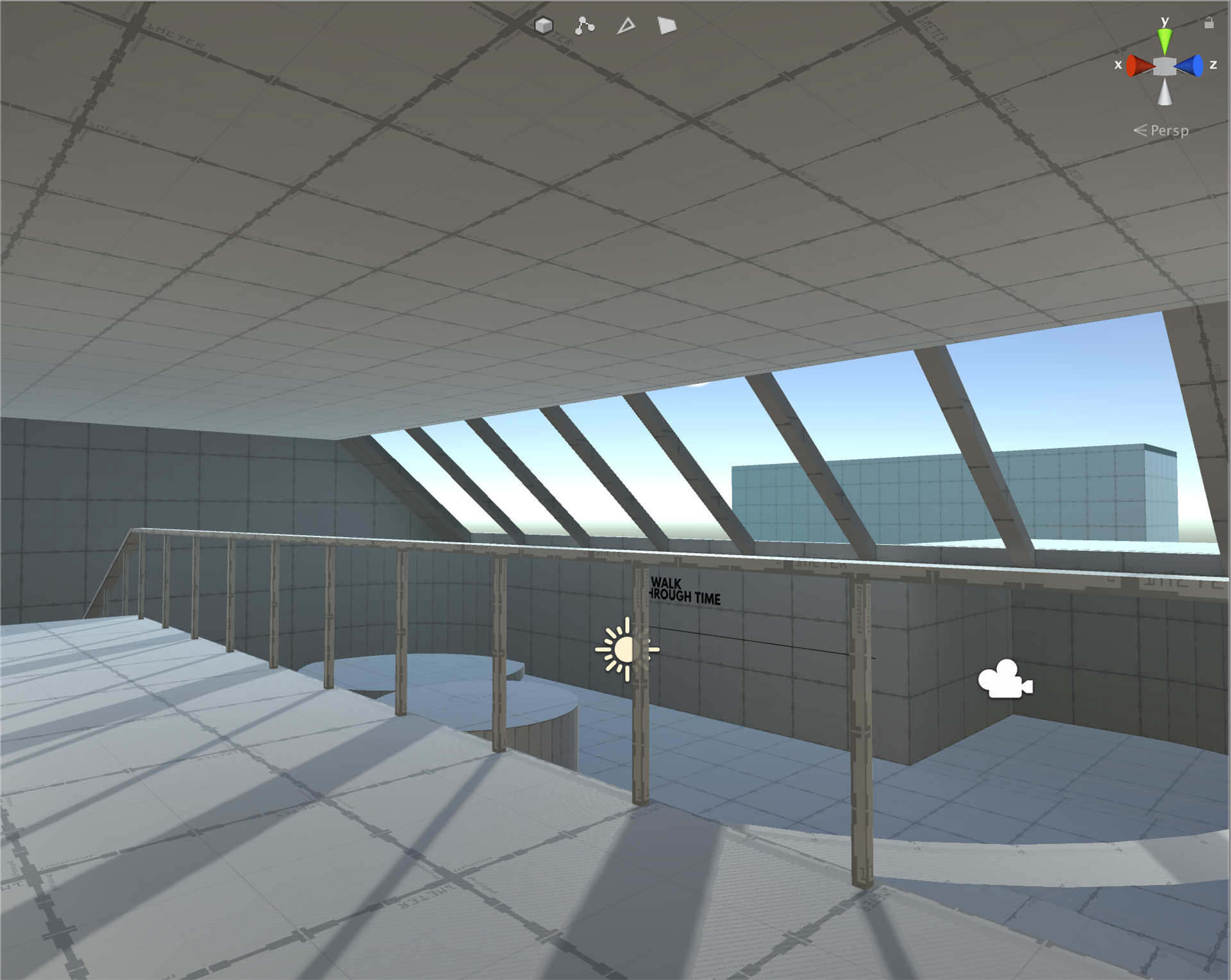


Level Design
Although WSWS is technically one “level” I still went about designing each area in a particular way, I chose to focus on the meanings behind basic shapes and use those to inform the level design. Using Probuilder I mocked out levels using basic geometry and went from there.
Terrain Design
Because it’s nearly impossible to simply “sculpt” terrain into something that looks inherently natural, I took a rough heightmap of the Seattle area and put it into the terrain asset. From there I populated it with trees, removed the ones in the water, and set about painting the terrain textures on the playable areas.

Texture Design
A process wherein I took a photo, used a custom Illustrator livetrace for minimal colors and stylization, ran a script to remove “noise”, ported the vectors to Photoshop to be recolored or gradiented. Then I simply laid the original image on top of everything and changed the layer mode to blend it into its vectorized form.
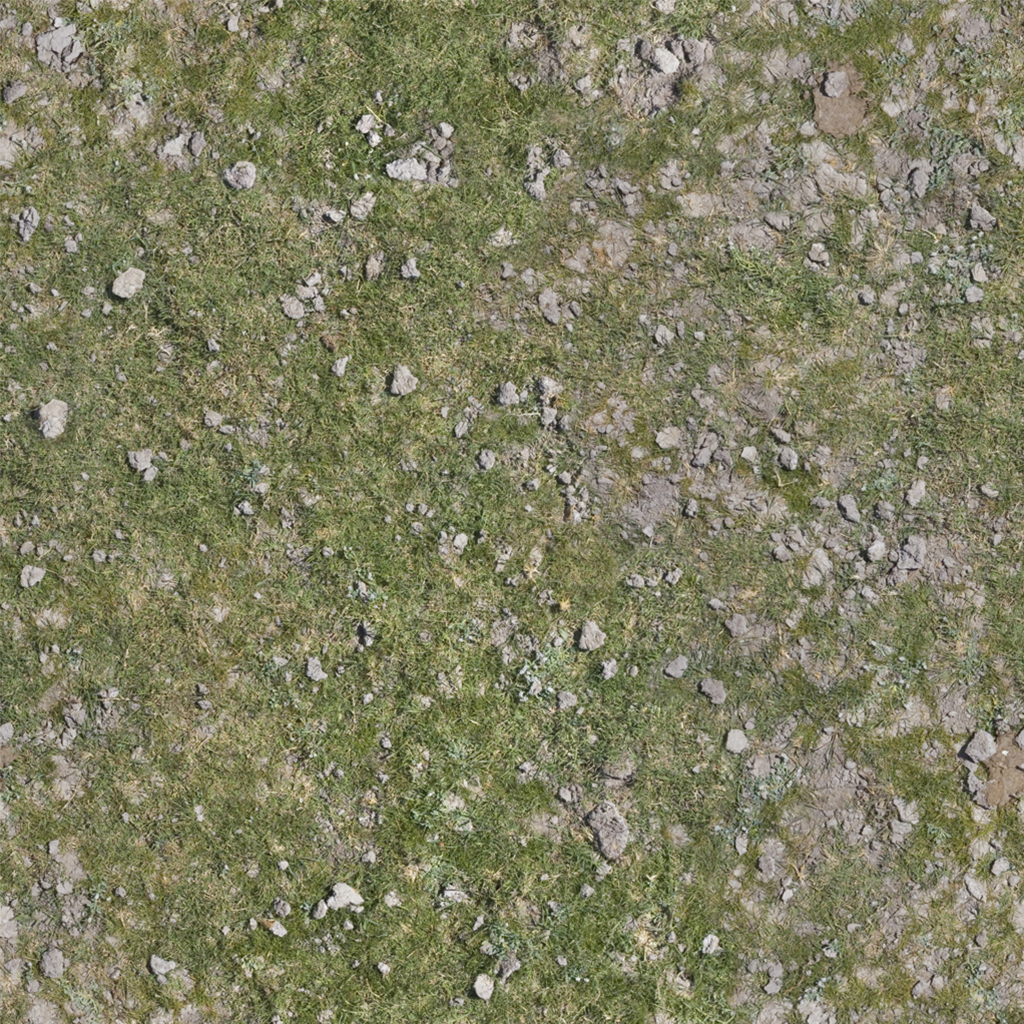


Photo
Livetrace
Photoshop
BFA Exhibit Plan
- Title/Vinyl
- Game Collection
- Process Books
- Business Cards
- Takeaways
- Namecard
- iMac & Controller
- Stool

Walking Collection
A supplementary collection of six games to compliment the release of Walk Sim Walk Sim. Each is featured in some way in the game. Each box design has the original logos, company emblems, copyrights, game description copy, the Walking Collection band, with new vector art.

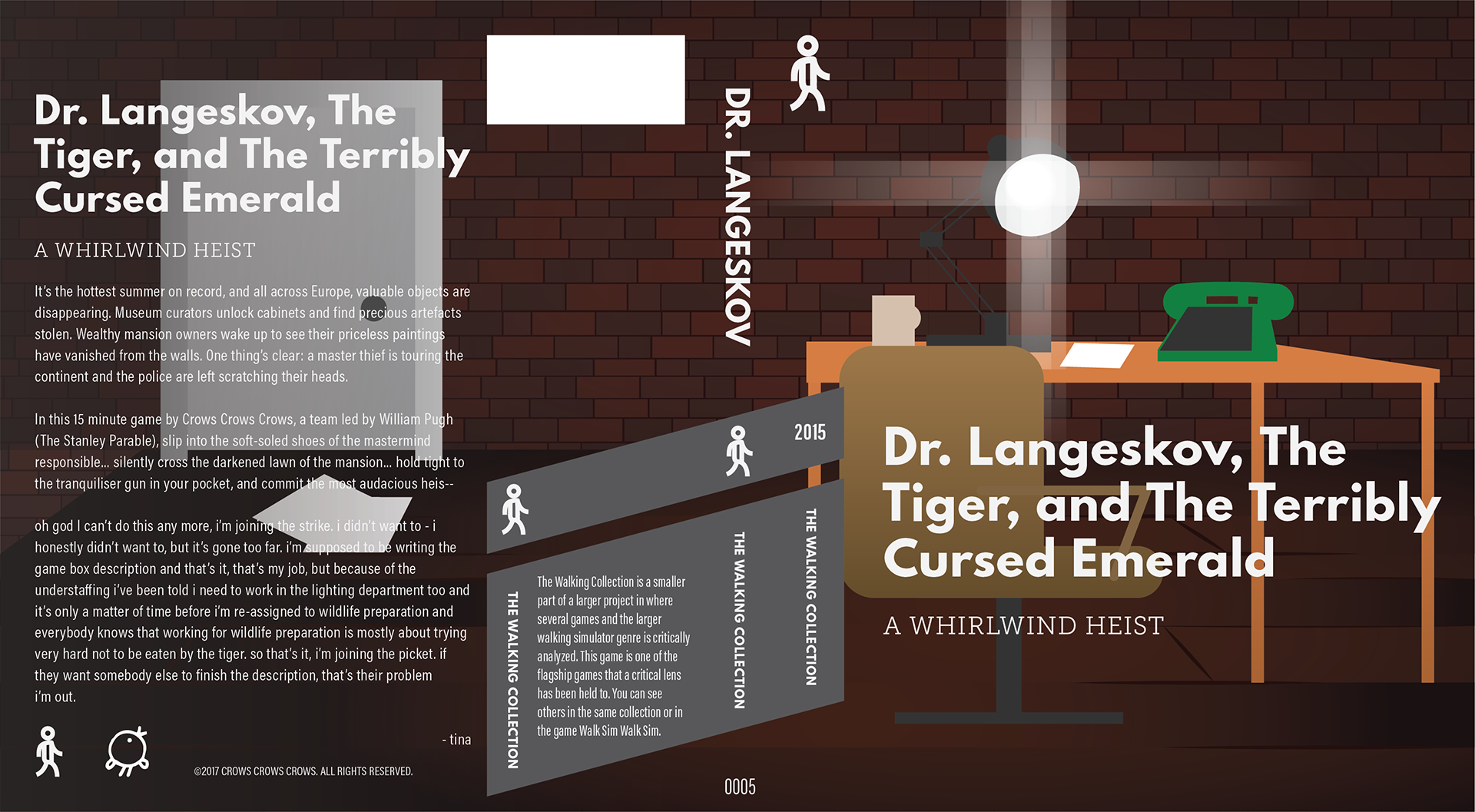




Walk Sim Walk Sim
I’d learned a lot from making a full fledged game, at least as fullfledged as two semesters would allow. There’s a lot I’d do differently, better, and I still might. I want to see how people respond to it, where I can take it from there, maybe this can see a bigger, full release somewhere down the line. In the meantime I intend to shore up some the smaller problems in the game, keep an eye on walksimwalksim.com for now.


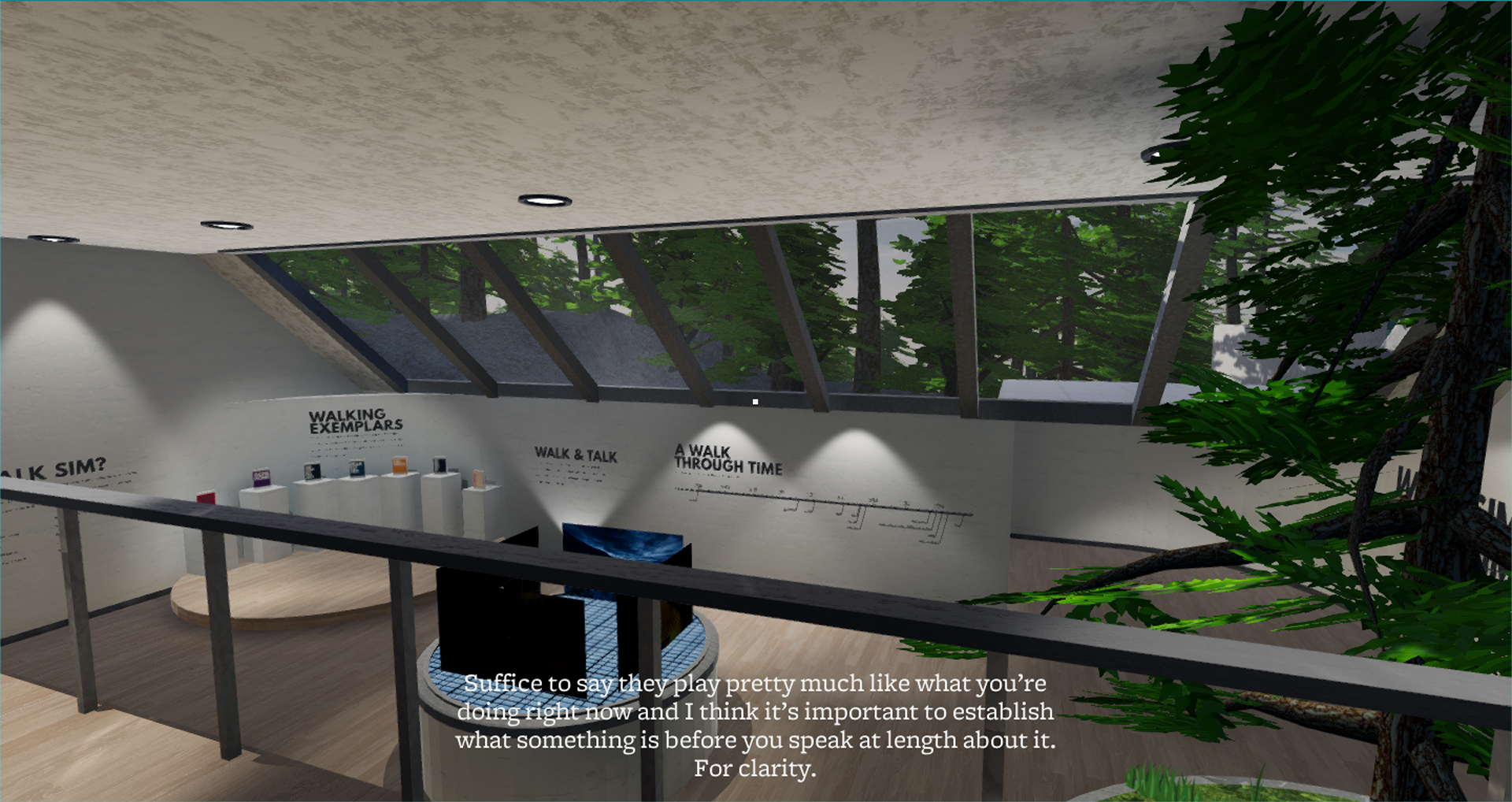







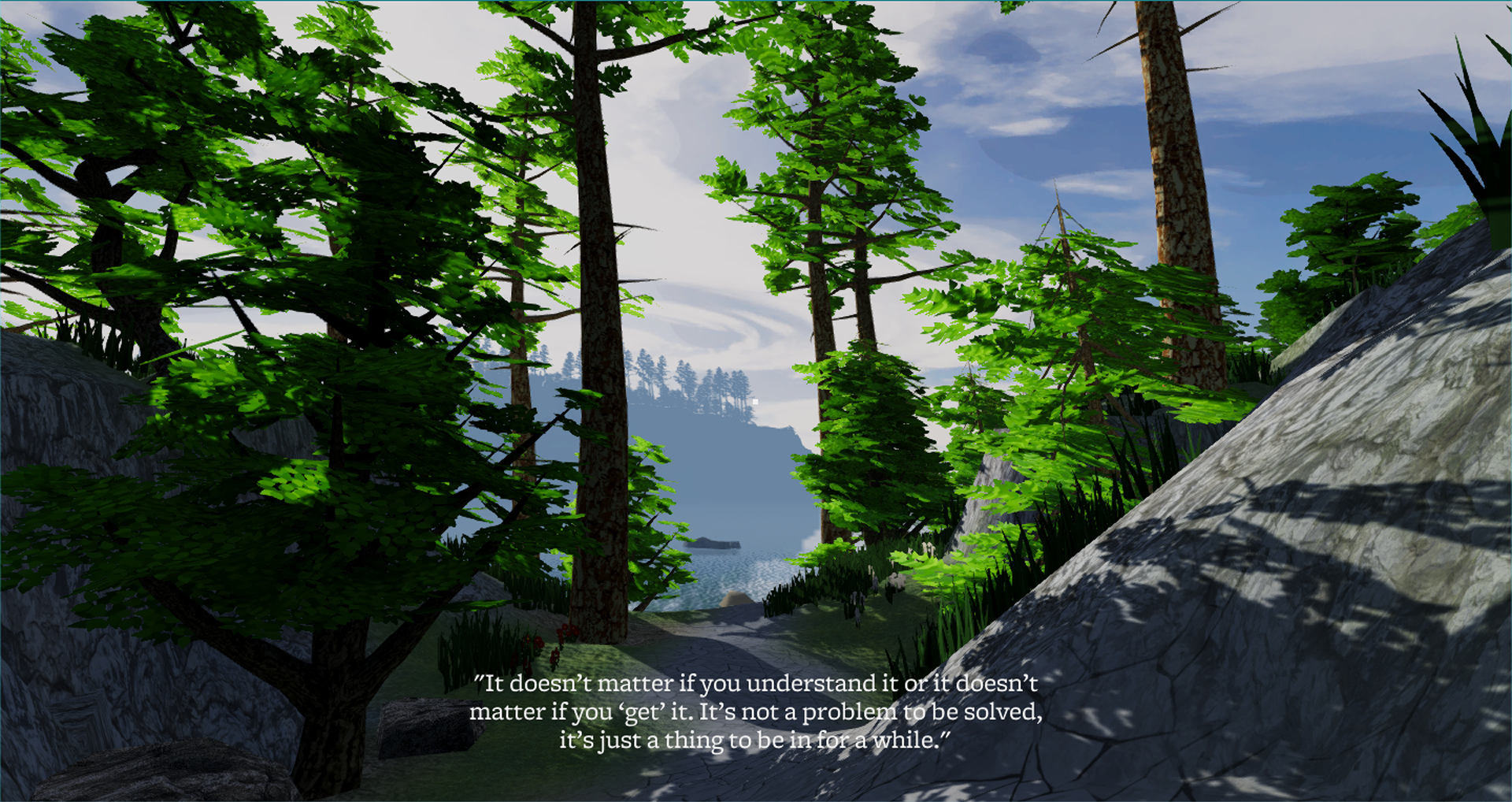

︎
